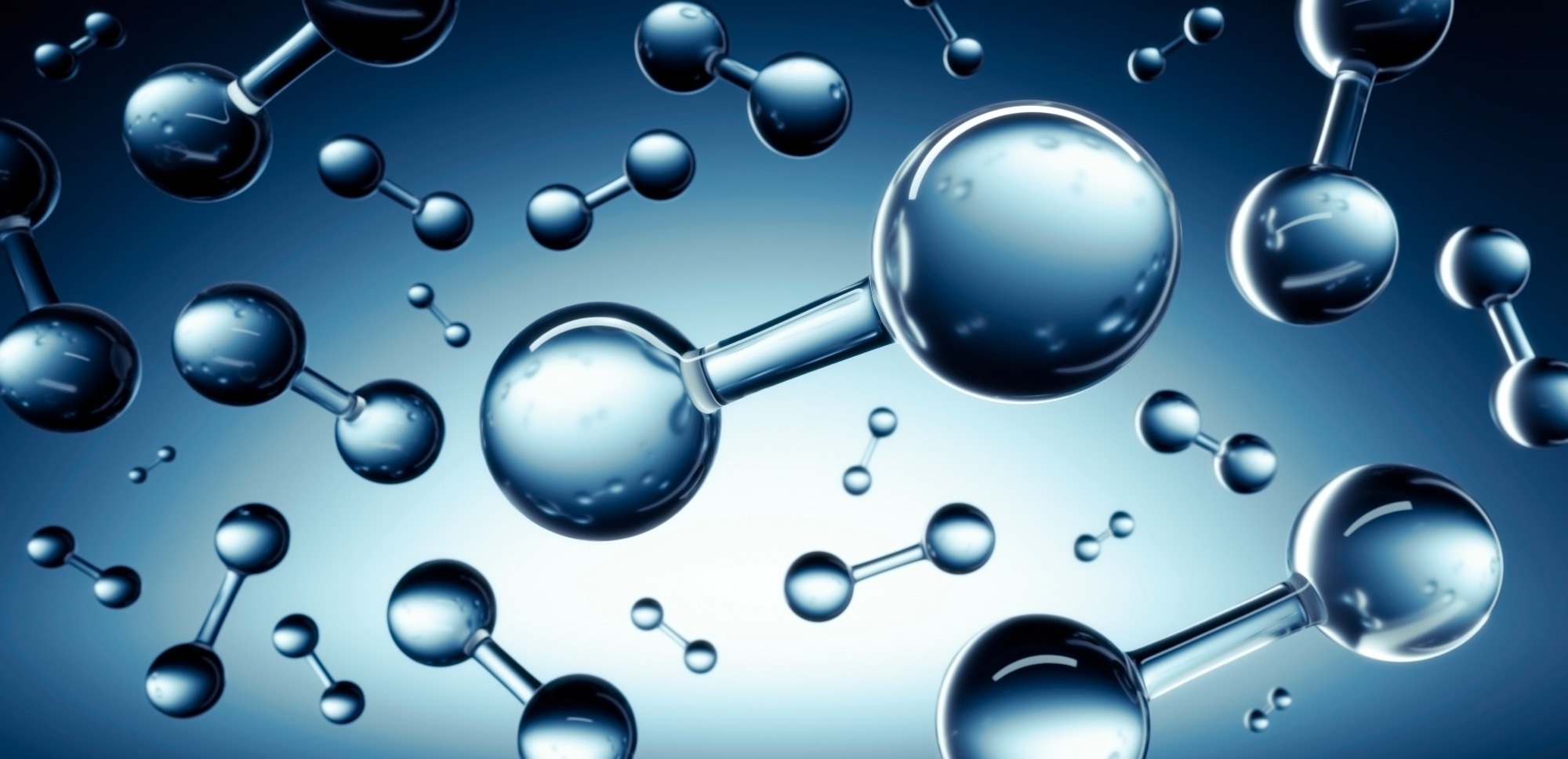A paper recently published in the journal Scientific Reports demonstrated the feasibility of using carbonized nickel (Ni)-doped zeolitic imidazole frameworks (ZIF)-67/ZIF-8-derived nanostructure catalysts for pyrolysis gasoline (PyGas) hydrogenation.

Study: Hydrogenation of pyrolysis gasoline by novel Ni-doped MOF derived catalysts from ZIF-8 and ZIF-67. Image Credit: peterschreiber.media/Shutterstock
Background
PyGas is obtained as a byproduct during the thermal breakdown of heavier oil fractions in an olefin unit containing high aromatic content. PyGas contains unsaturated components, including di- and mono-olefins and aromatic hydrocarbons.
Due to its high-octane rating, the product can be considered a potential feedstock for producing aromatics used as a gasoline blendstock. However, the unsaturated chemicals in PyGas, primarily gum agents, must be stabilized before using the product in different applications.
Typically, PyGas is catalytically hydrogenated to stabilize the unsaturated compounds. Catalytic hydrogenation involves selective hydrogenation of alkenyl aromatics and di-olefins at low temperatures. The resulting product can be used as a gasoline fuel blend base.
Subsequently, the aromatics are hydrogenated entirely at high temperatures to eliminate remaining olefins or sulfurs. PyGas hydrogenation using Ni catalysts has received significant attention owing to their robust gum resistance, minimal toxicity, and low cost.
Different Ni-based bimetallic catalysts, such as Ni-cobalt (Co), Ni-zinc (Zn), and Ni-platinum (Pt), are often used in the PyGas hydrogenation process. Ni bimetallic catalysts demonstrate more synergistic effects in different catalytic processes than Ni monometallic catalysts, which possess poor catalytic efficiency.
Metal-organic frameworks (MOFs) are considered suitable for hydrogenation catalysis owing to the recent advancements in their hydrogen storage characteristics. MOF materials can be utilized in several hydrogenation processes, including as a support for critical hydrogen storage materials.
Among the MOF materials, ZIFs, composed of divalent metal and imidazolate-based ligands, display the highest stability in chemical and thermal conditions. Several ZIFs are microporous and employed in applications that require a narrow form and size.
ZIFs have been recently utilized to encapsulate catalytically active nanoparticles to synthesize catalysts for several novel processes. However, microporous ZIFs cannot be used as an effective support for PyGas hydrogenation.
Although the mean pore diameter of ZIFs, specifically ZIF-67 and ZIF-8, can be increased using triethylamine during their production process, the extent of increase is still insufficient for catalytic applications. Additionally, ZIFs lack metallic, active sites due to the robust coordinative bonding between the divalent metals and imidazole.
Carbonization can increase the mean pore diameter and metallic, active sites significantly, increasing the electrical conductivity of ZIFs, which is necessary for catalytic hydrogenation reactions. For instance, the mean pore diameter and electroconductivity of Ni-doped ZIF-67 increased considerably after carbonization due to the N-doped carbon support formation.
The Study
In this study, researchers fabricated ZIF-67 and ZIF-8-derived novel nanostructure catalysts and investigated the feasibility of using them for PyGas hydrogenation. Ni was added to both ZIF-67 and ZIF-8 structures through in situ synthesis to enhance their hydrogenation ability.
The prepared catalysts were pyrolyzed at 450 °C with a five °C/min heating rate for three hours under nitrogen media to improve their electronic properties and pore size distribution.
Deionized water, triethylamine, 2-methylimidazole (2-MIM), nickel(II) nitrate hexahydrate, cobalt(II) nitrate hexahydrate, and zinc nitrate hexahydrate were used as the starting materials for the synthesis of Ni-doped ZIF-67 and ZIF-8 catalysts.
Subsequently, the ZIF-based catalysts were carbonized by placing them in a porcelain combustion boat and then in a tube furnace. Eventually, five ZIF-based catalysts were synthesized with and without Ni doping, including NiCoZn/N-doped carbon (NC), NiCo/NC, NiZn/NC, CoZn/NC, and Co/NC, and compared with expensive commercial palladium/aluminum oxide catalyst used for olefin hydrogenation.
Researchers used a fixed-bed reactor with a 20 mm internal diameter and 900 mm height to perform the catalytic activity test of the synthesized catalysts. Field emission scanning electron microscopy, X-ray diffraction, thermogravimetric analysis, and inductively coupled plasma mass spectrometry were used to characterize the samples.
Observations
Carbonized Ni-doped novel nanostructure catalysts derived from ZIF-67 and ZIF-8 with superior electronic properties and large surface area were synthesized successfully. The Ni-doping substantially improved the hydrogenation capability of the ZIF-based catalysts.
Moreover, the carbonization effectively turned the intrinsic metal ions in ZIF-67 and ZIF-8 into metallic nanoparticles and the 2-MIM ligand into electroconductive N-doped carbon material, which served as a support during the PyGas hydrogenation process.
The addition of Ni to the ZIF structures increased the pore diameters to 6.5 nm and decreased the surface areas. Similarly, the carbonization step also increased pore diameters to 11.42 nm due to the ZIF structure destruction and N-doped carbon material formation.
Catalysts containing Zn species did not substantially influence the PyGas hydrogenation reaction. However, using catalysts with Co species led to a higher conversion of C6 olefins, while catalysts with Ni species led to a better conversion of C8 and C7 olefins.
Among the synthesized catalysts, CoNi/NC, a polymetallic ZIF, displayed the best PyGas hydrogenation performance with a 69.5% conversion of total olefins in the PyGas. The CoNi/NC catalyst could be used effectively as an alternative to expensive palladium/aluminum oxide catalysts that can convert 70.9% of olefins.
Catalysts not carbonized showed no olefin conversion in the PyGas hydrogenation process due to a lack of active sites in these structures.
To summarize, the findings of this study demonstrated the feasibility of using pyrolyzed Ni-doped ZIF-67/ZIF-8 catalysts, specifically CoNi/NC, for the PyGas catalytic hydrogenation process.
Reference
Baghban, A., Ezedin Nejadian, H., Habibzadeh, S. et al. (2022). Hydrogenation of pyrolysis gasoline by novel Ni-doped MOF derived catalysts from ZIF-8 and ZIF-67. Scientific Reports. https://www.nature.com/articles/s41598-022-24071-
Disclaimer: The views expressed here are those of the author expressed in their private capacity and do not necessarily represent the views of AZoM.com Limited T/A AZoNetwork the owner and operator of this website. This disclaimer forms part of the Terms and conditions of use of this website.